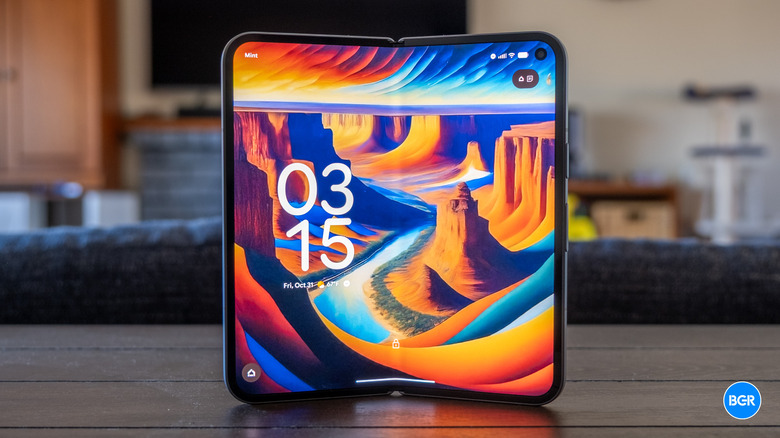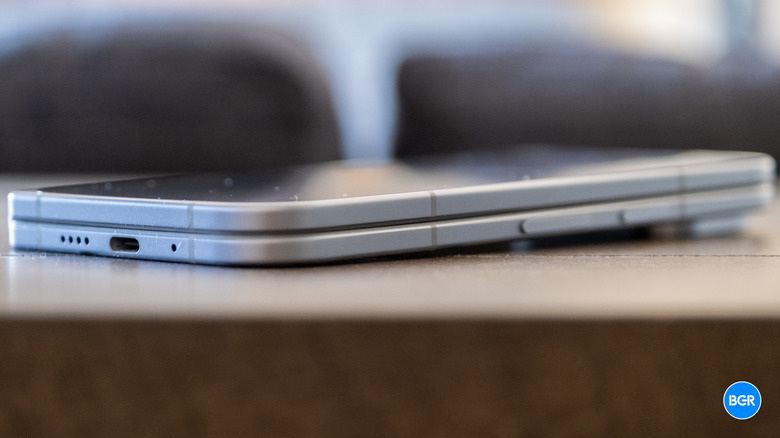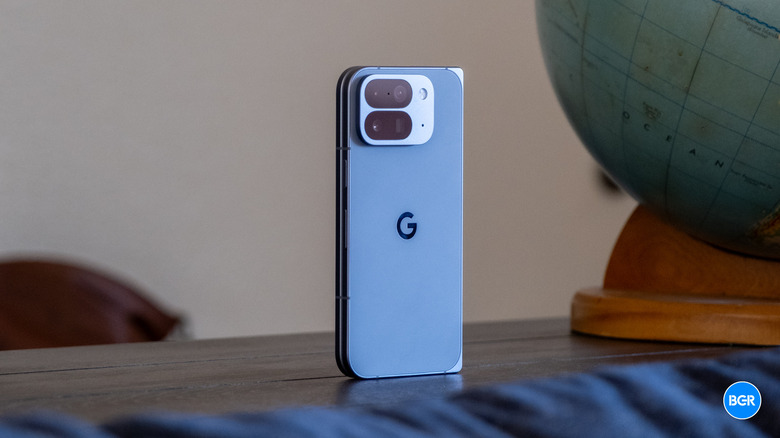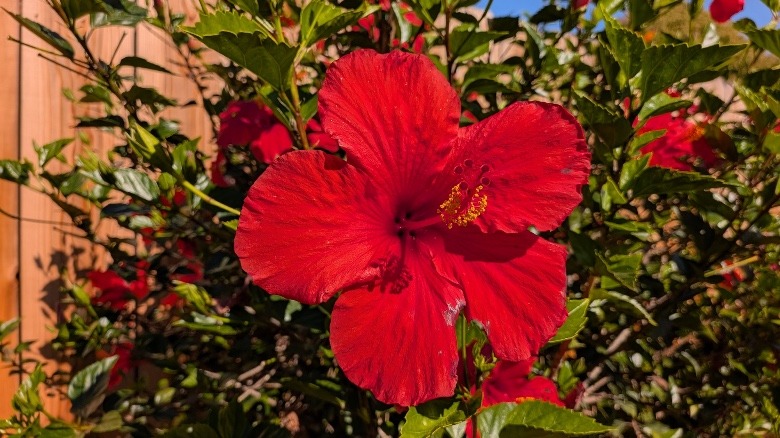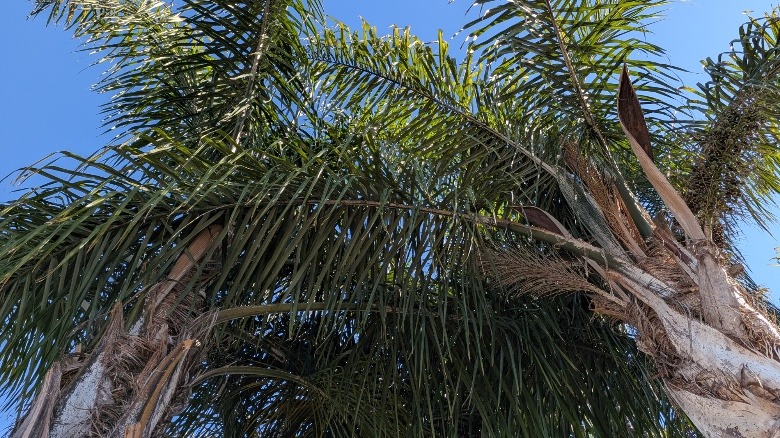Google Pixel 10 Pro Fold Review: My Favorite Flawed Foldable
Last year's Google Pixel 9 Pro Fold was my favorite foldable so far, and now Google is back with a follow up. The Google Pixel 10 Pro Fold, however, lives in a slightly different world of foldable phones — one where other brands are building increasingly thin devices, that arguably feel like average slab phones even when they're folded up. But even in that world, I still love the Pixel 10 Pro Fold.
In my opinion, Google's Pixel 10 Pro Fold still has the best software experience of any foldable phone out there. Plus, it still feels relatively premium. That said, there are plenty of compromises.
Design
The Pixel 10 Pro Fold keeps a book-style foldable design with flat sides and rounded corners, and as far as overall looks go, it's more or less the same as last year. That's not necessarily a bad thing, nor is it all that surprising. It's pretty common for phones to keep their design for at least a year or two before being refreshed, and given the fact that this is Google's second foldable attempt, I actually would have been surprised if there were radical design tweaks.
But even then, the device has to go up against competition that has been redesigned, like the Samsung Galaxy Z Fold 7. Folded up, the Pixel 10 Pro Fold is 10.8mm thick, compared to the Galaxy Z Fold 7's 8.9mm. Unfolded, the Pixel is around 1mm thicker than the Galaxy device. It certainly feels thicker when you hold it, and I hope Google makes the next generation model a little thinner. That said, this is certainly not a deal breaker for me. One millimeter isn't much in the grand scheme of things, and the Pixel 10 Pro Fold still feels nice to hold.
The materials it's made from are relatively premium too. On the front and back of the phone, you'll get Gorilla Glass Victus 2, which should help keep the device reasonably safe. Perhaps more important is the fact that the Pixel 10 Pro Fold offers IP68 dust and water resistance, which is kind of a big deal. It makes the Pixel 10 Pro Fold the first foldable phone to have an IP68 rating, bringing it in line with recent slab phones. It shows how far foldables have come in the span of around five years or so — and while foldable devices are still inherently less durable due to their mechanical hinge, at least the phone should withstand most water-related incidents.
The Pixel 10 Pro Fold is available in Moonstone and Jade color options, which is perhaps the biggest visual design difference compared to the Pixel 9 Pro Fold. I have the Moonstone version, which I really like the look of.
Display
The displays on the Pixel 10 Pro Fold are, in a word, excellent. The outer display is 6.4 inches, and it's an OLED screen with a 20:9 aspect ratio. It has a 1080p resolution, so it's not as crisp as some screens out there, but I never felt like it wasn't vivid or detailed enough. It's more or less the same as last year's display in terms of resolution and refresh rate, but the Pixel 10 Pro Fold jumps to 3,000 nits peak brightness instead of 2,700 nits. It's certainly not an unwelcome change, but I already found last year's screen to be bright enough, so it's not going to dramatically change things for me.
The worst thing about the front screen is that it's not an LTPO OLED display, meaning that it can't range all the way down to 1Hz to save on battery. Instead, this screen can range between 60Hz and 120Hz. While that does mean that it feels smooth and responsive, considering the fact that I use the outer screen the majority of the time, it would have been nice to get some of those battery savings — especially on a device this expensive.
The star of the show, of course, is the inner 8-inch OLED "Super Actua Flex" panel. It has a 2152 × 2076 resolution and the same 3,000 nit peak brightness. This screen is an LTPO OLED display, so it can range all the way from 1Hz to 120Hz. I've seen some reviews criticizing the crease in the inner display, but I had no real issues with it. Sure, it's a little more noticeable than the one on the Galaxy Z Fold 7, but I still find it very easy to ignore. Both screens look fantastic. They're bright, sharp, and excellent for multitasking and watching media. No complaints here.
Performance
Performance is where things get a little... complicated. The phone is powered by Google's new Tensor G5 chip, built on a 3nm process. It's equipped with 16GB of RAM and up to 1TB of storage. The Tensor series has never been ultra-high performance, but with the likes of Qualcomm and Apple both dramatically improving performance year over year, it's feeling more and more like the Pixel is getting left behind.
Benchmarks can be a little complex to decipher as there are lots of things that go into how a device will perform. They can give us an idea of how a device handles tasks compared to other devices. Keep in mind, however, that things like software play a significant role, and while Google's software is getting increasingly customized, it still performs more efficiently than, for example, Samsung's One UI.
All that said, the Pixel 10 Pro Fold performs a fair bit better than the Pixel 9 Pro Fold in GeekBench 6 (a CPU test), but significantly behind the likes of the Galaxy S25 Ultra, which itself now has a last-generation Qualcomm chip. It also doesn't perform as well as the Pixel 10 Pro, given the fact that it lacks the vapor chamber cooling tech that the Pro and Pro XL offer.
In real-world performance, it's fine though. I never felt like the phone was unable to keep up with what I needed it for, including heavier multitasking. It does heat up when you start gaming, and those games won't load quite as quickly as they might on a phone equipped with the latest Qualcomm chip. But while the Pixel 10 Pro Fold certainly lags much of the competition in benchmarks, it's powerful enough for most users.
Camera
The Pixel series has long offered excellent cameras, and the Pixel 10 Pro Fold is no exception to that rule. But, like last year, the actual hardware leaves a little to be desired, especially compared to other new Pixel phones like the Pixel 10 Pro. In fact, the hardware on the Pixel 10 Pro Fold is very similar to the Pixel 9 Pro Fold, which itself was a little behind the Pixel 9 Pro.
That's pretty frustrating, especially given the price of these foldable phones. I get the idea that foldable devices introduce new design challenges that hardware manufacturers need to overcome — but frankly, it doesn't matter why the cameras are worse. They just are, and that means that if you buy the Pixel 10 Pro Fold, you'll need to accept that your photos will be a little worse than those captured by the far cheaper Pixel 10 Pro.
To be fair, though, the camera is still pretty good. The main camera has a 48 megapixel 1/2.0-inch sensor, while the ultrawide camera sits in at 10.5 megapixels with a 127-degree field of view, and the telephoto camera has a 10.8 megapixel sensor with up to 5x optical zoom.
As a whole, the photos captured by the phone are very good. In well-lit environments, you'll get vibrant and crisp images, even if they don't have as much depth or detail as those captured by the Pixel 10 Pro. I still like how Google processes photos on its Pixel phones — it may be slightly less accurate than some phones, but it still looks very good.
There's a solid selection of camera-based features, such as Best Take, Add Me, and Magic Editor, which now supports text-based input for editing direction. That's a nice addition, and it means that users can simply ask their phone for the edits they want rather than having to figure out how to use the tools on their own.
But there are also features that are missing compared to the other Pro devices. The Pixel 10 Pro Fold doesn't have the new Pro Res Zoom feature on offer by the Pixel 10 Pro and Pixel 10 Pro XL. On those phones, the feature means that photos zoomed past 30x will use generative AI to sharpen and enhance details. Much can be said about whether or not you actually want your resulting photos to be made with generative AI, given the fact that basically means that they're not images of what you actually captured through the camera sensor itself. That's neither here nor there, though, because you won't get that feature on the Pixel 10 Pro Fold.
Battery life and charging
Powering the Pixel 10 Pro Fold is a 5,015mAh battery. Google says you'll get up to 24 hours of battery life, but that's under pretty specific ideal conditions, and most people should expect far less. That doesn't mean that the battery life is bad, though. I got a full day of moderate to heavy use, and while I didn't always end the day with much battery left, how you fare will largely depend on how much you use the interior screen versus the exterior one and how much you do things like gaming.
It supports 30W wired charging and Qi2 wireless charging. But the big news is that it also supports so-called PixelSnap, which is Google's name for magnetic accessory support with Qi2. This is a very cool upgrade — and also long overdue. It basically means that you'll be able to use magnetic Qi2 and MagSafe accessories with the Pixel 10 Pro Fold, including things like charging stands and wallet accessories. Hopefully, this signals that more Android devices will get support for full Qi2 soon, especially given it's a feature that's been available for the iPhone for many years now.
Software
My favorite thing about Pixel phones has always been the software experience. For starters, there's always less clutter. There are no duplicate options for gallery and clock apps and no extra bloatware features that you'll never need and can't uninstall. The Pixel 10 Pro Fold ships with Android 16 with the latest version of Material You, and it looks polished and easy to use.
One of the major new features is Magic Cue, which uses AI to deliver information as you need it, across the operating system. This can include things like flight information, calendar events, and so on. It's neat in practice, but it may require using your phone for a few days before it really shows up much, so don't expect overnight changes.
There are other changes, like the new Pixel Journal app, but I'm not going to go into all of them right now. The most important thing is still that the Pixel flavor of Android is, to me, the best version of Android you can get right now. It's colorful, fun, and unique, without being way over the top. On the Pixel 10 Pro Fold, you'll also get features like a split-screen view with adjustable window sizes, the ability to drag and drop files between apps, and more.
Conclusions
Foldable phones are getting better, and the Pixel 10 Pro Fold is certainly better than the Pixel 9 Pro Fold from last year. But it's also lacking plenty of features compared to the Pixel 10 Pro. Julian Chokkattu over at Wired said it best: "These omissions make this phone feel more like the Pixel 10 Fold, rather than the Pixel 10 Pro Fold."
The camera is closer to the Pixel 10 in quality, while the performance is closer to the Pixel 10 without the vapor chamber. It's even missing Pixel 10 Pro features like Pro Res Zoom. To be clear, I still really like the Pixel 10 Pro Fold. And I still find it to be my favorite foldable device, thanks to its great software experience, but at a price this high, it's getting harder and harder to stomach hardware sacrifices. That means that you have to really want to use a foldable phone specifically, because if you don't, it's probably better to just go for the Pixel 10 Pro.
The competition
In the world of foldable phones, the Samsung Galaxy Z Fold 7 is probably the biggest competition in most markets where the Pixel 10 Pro Fold is available. The Galaxy device is thinner and lighter, plus it has the 200-megapixel camera available on the Galaxy S25 Ultra, but I don't like its software experience as much. For me, that's what makes the Pixel 10 Pro Fold my preference, even though objectively speaking, the Galaxy Z Fold 7 is probably better for most.
If you like the idea of a Pixel but don't necessarily need a foldable, then just go for the Pixel 10 Pro or Pixel 10 Pro XL. They're excellent phones and actually better than the Pixel 10 Pro Fold in most ways, except for the fact that they don't have that large second screen.
Should I buy the Google Pixel 10 Pro Fold?
Yes, but be sure you want a foldable phone with the Pixel software experience.
